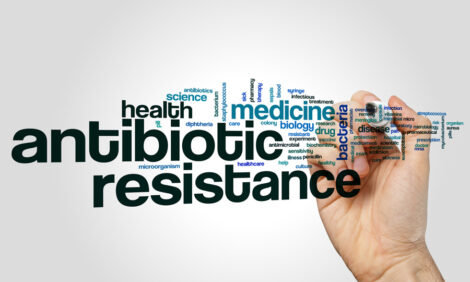



Protecting livestock from lumpy skin disease
Lumpy skin disease causes painful skin nodules, high fever and reduced milk yield[Excerpt of a report by the World Organization for Animal Health: The State of the World’s Animal Health 20251]
Lumpy skin disease (LSD) is a highly contagious viral illness that can devastate cattle herds. It primarily affects cattle, water buffalo and yaks causing painful skin nodules or raised lumps, hence the name of the disease. Other signs of the disease may include high fever, reduced milk yield, inflamed nose and eyes with excessive drooling, enlarged lymph nodes or glands that can be easily felt, reluctance to move due to fluid accumulating in the lower limbs, and loss of appetite, weight or body condition. Sometimes reproduction can be affected. In severe cases, the disease can even be fatal, particularly in young or weak animals.
The spread of the LSD virus over long distances is primarily associated with movements of infected animals. However, there is also local spread of the disease by biting insect vectors such as flies, mosquitoes and ticks. LSD can therefore be spread over long distances by wind transporting insects carrying the LSD virus, or via the movement and trade of infected livestock.
Vaccination benefits
Vaccination remains an effective tool in preventing its spread and mitigating its impact. Rigorous vaccination programs, when combined with strong biosecurity measures, can significantly reduce infection rates and protect entire herds. Countries that have implemented widespread LSD vaccination campaigns have seen substantial success in controlling outbreaks and minimizing economic losses. Vaccination is not just a preventive measure; it is an essential investment in the health and sustainability of the livestock industry.
Vaccination remains a crucial tool for the control and potential eradication of the disease. Vaccination not only protects animals from getting infected with LSD but also reduces further vector transmission of the LSD virus as the insects are not taking up virus from infected animals to spread it.
Vaccination challenges
Despite its benefits, LSD vaccination presents several challenges. The most widely used vaccines are live-attenuated, such as the Neethling strain vaccine, which provides strong immunity but can sometimes cause mild symptoms in vaccinated cattle. Farmers may be alarmed by small lumps or lesions that resemble disease, even though they are harmless and temporary. Immunity from LSD vaccines is not always lifelong, requiring booster doses to maintain protection. Achieving high vaccination coverage, at least 80%, is essential to slow the virus’s spread, but logistical and financial constraints, shortage of supply and vaccine hesitancy among farmers can hinder largescale vaccination efforts.
Vaccination campaigns must be well-coordinated, ensuring that vaccination occurs before peak insect seasons when the risk of transmission is highest. Vaccines should be safe for all cattle breeds, including pregnant animals. Collaboration between authorities, farmers and industry stakeholders are critical to promoting vaccine uptake and ensuring a sustainable long-term control strategy.
Comprehensive approach
While vaccination is an important tool, it is not sufficient on its own to eliminate LSD. Effective disease control requires a combination of strategies, including vector control, movement restrictions and strong biosecurity measures. Since LSD is spread by biting insects such as mosquitoes, flies and ticks, eliminating stagnant water sources where mosquitoes breed, judicious use of insecticides and improving farm hygiene to minimize insect exposure supports LSD control.
In the event of an LSD outbreak, quarantining infected animals and restricting livestock movement from affected areas are necessary to prevent further spread. For newly introduced cases, rapid emergency vaccination and strict movement controls can help contain the disease before it becomes endemic. For LSD-free countries, prevention strategies should focus on early detection, risk assessment and preparedness for potential outbreaks.
By integrating vaccination with other disease control measures, countries can improve their ability to manage LSD, protect livestock and safeguard farmers’ livelihoods.
Reference
1World Organization for Animal Health (2025). – The State of the World’s Animal Health 2025. Paris, 120pp. https://doi.org/10.20506/woah..... License: CC BY-SA 3.0 IGO.



